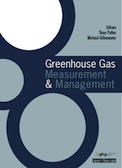
Rice production is a major source of global methane emissions and many studies have been conducted to quantify flux rates of methane alongside N2O emissions from rice fields. The closed chamber method with manual sampling is the conventional approach for determining greenhouse gas (GHG) emission rates from rice fields. However, as of now, there is no commonly accepted standard for the measurement protocols, so that published studies encompass a variety of different modalities depending on the specific settings and labour limitations of a given study. This literature study comprises 155 peer-reviewed articles on manual GHG sampling with a static closed chamber as a basis to determine the most common practices of this method regarding the following features:
1) procedures (duration of chamber closure, number of gas samples per chamber closure and number of replicate chambers),
2) timing (number of samplings per day and time of day of sampling) and
3) intervals (between two consecutive sampling days).
It has been found that some features show a high degree of uniformity among these studies, namely, the procedures. On the other hand, other features of the measuring protocol diverge widely (timing and intervals). Derived from these results, the following common practices (compiling features being applied in more than 66% of the studies that give information on the particular feature) have been identified: duration of chamber closure (30 minutes or less), number of gas samples per chamber closure (3 or 4), number of replicates (3), number of samplings per day (1 or 2), time of day of sampling (late morning) and interval (7 days or less).








